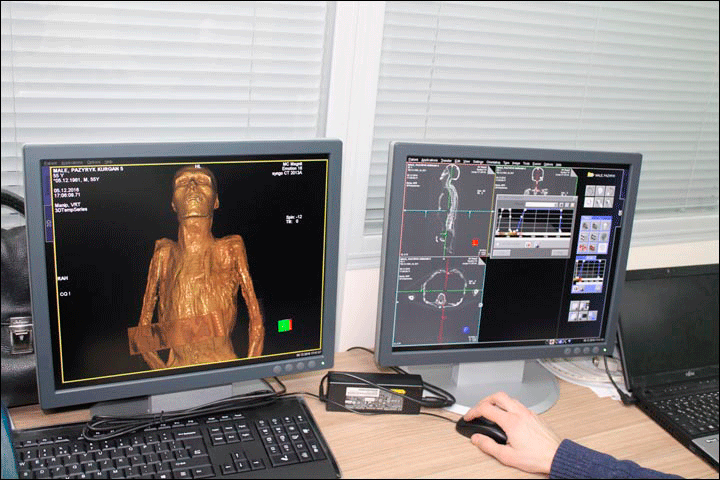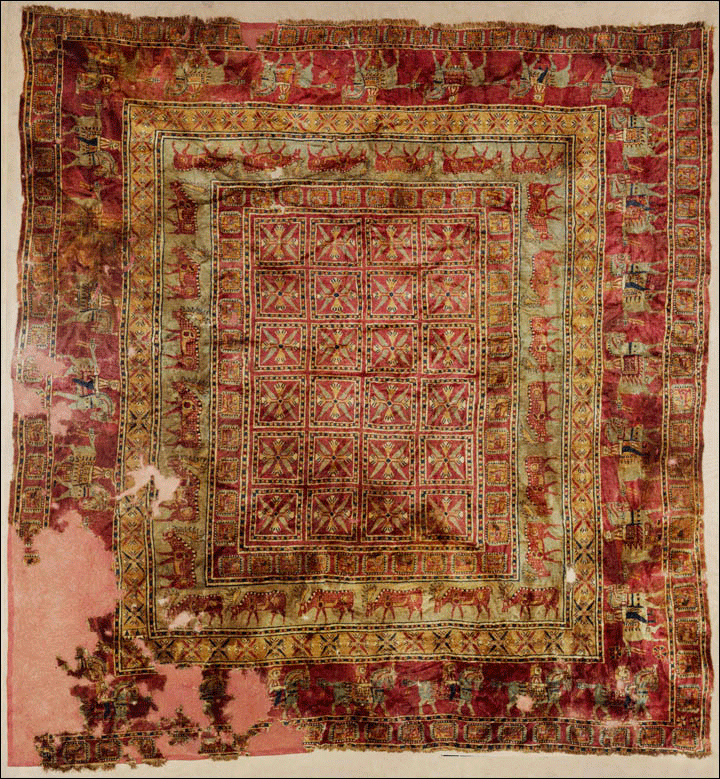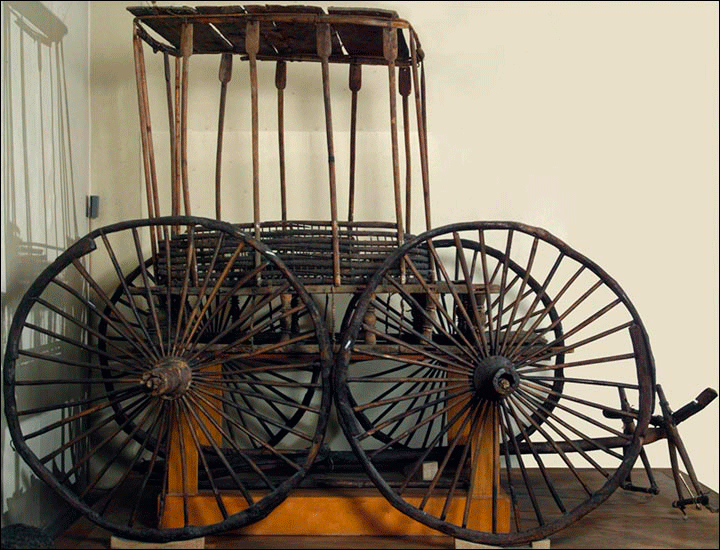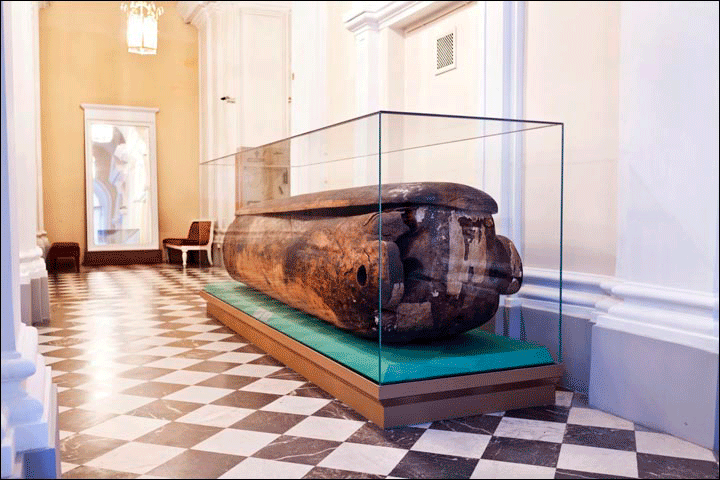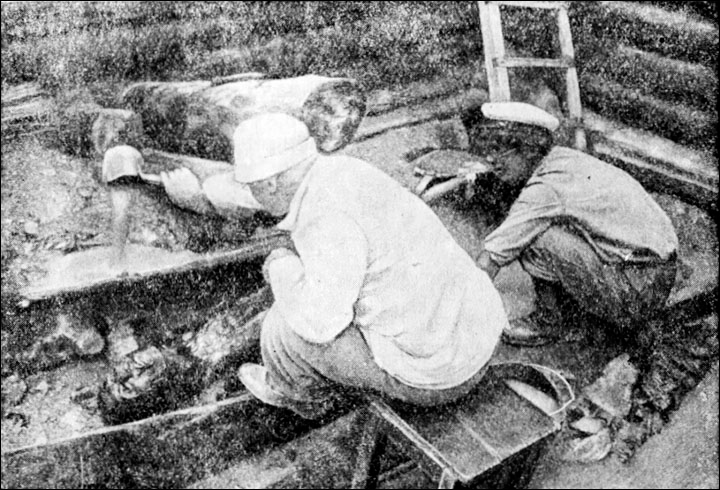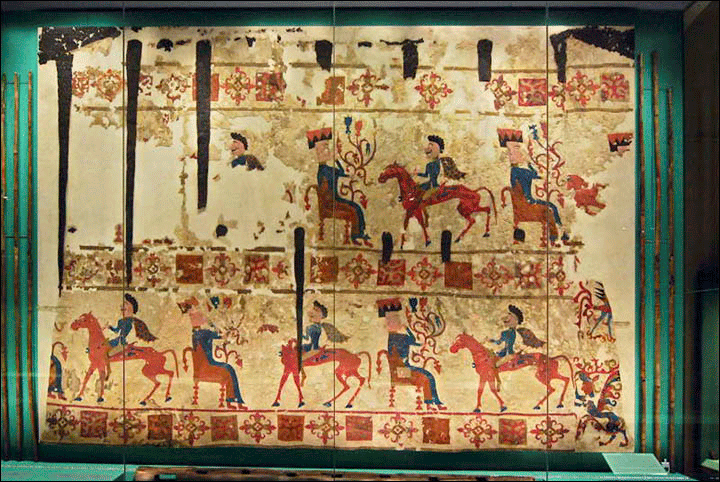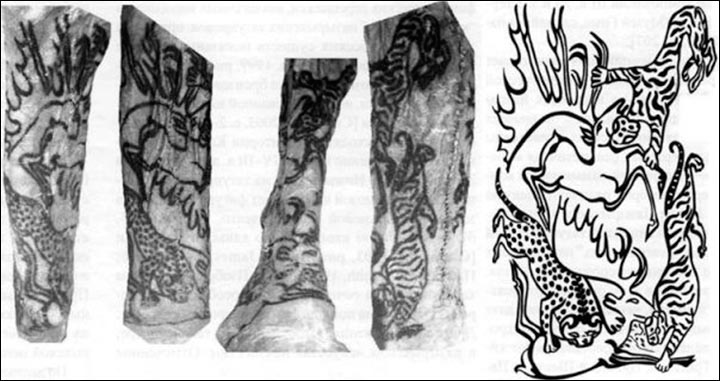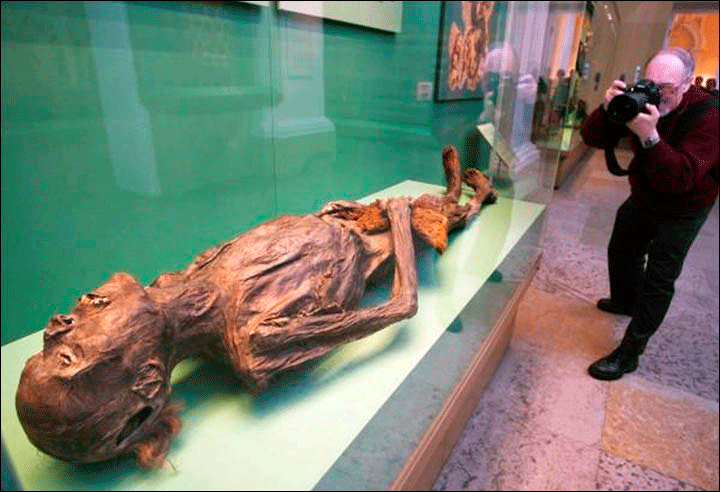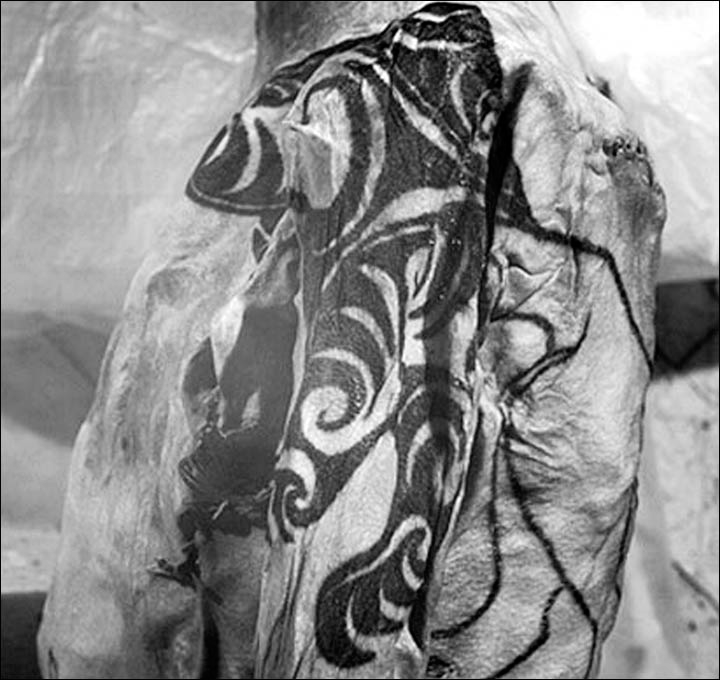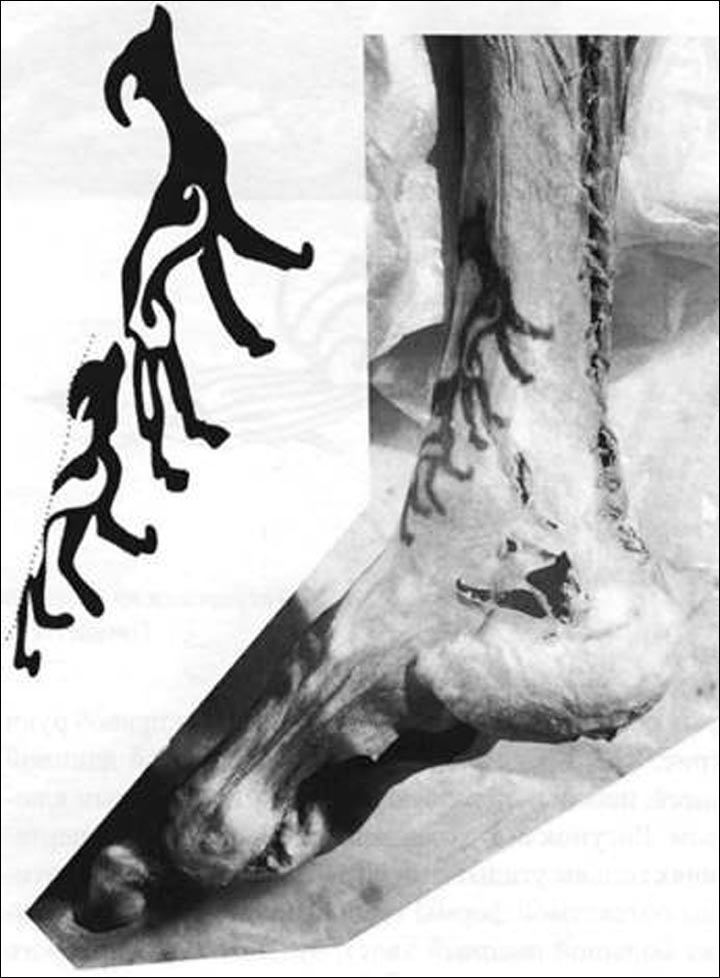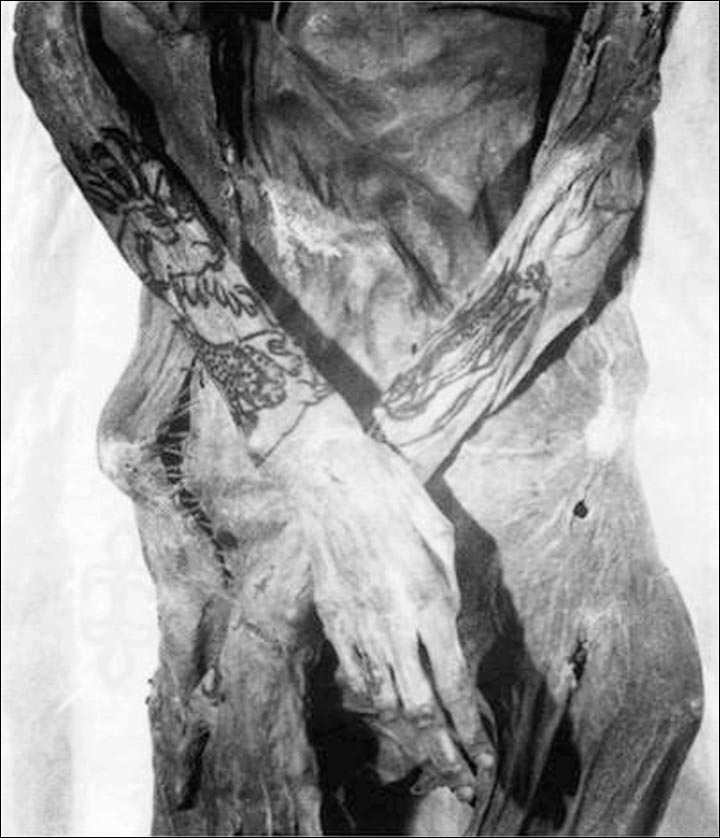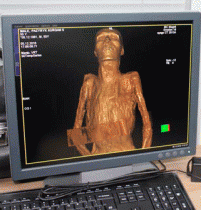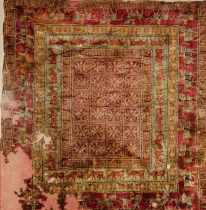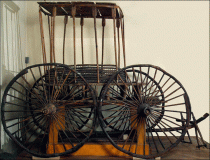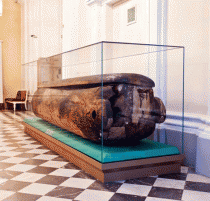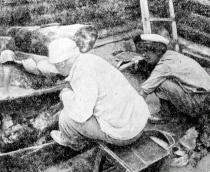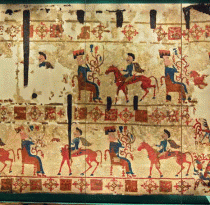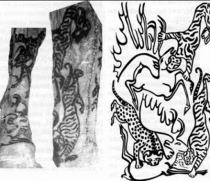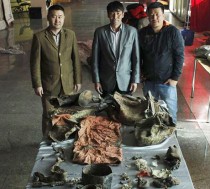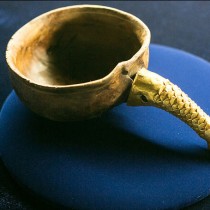A mummified pair unearthed from a grave in Siberia 68 years ago is examined with new technologies yielding details and new information.
The mummified man and woman were discovered in 1949 in the Altai Mountains in a burial mound 42 metres wide. They are considered to be a local chieftain and his concubine or wife, buried beside him, members of the Pazyryk culture. Although the grave was looted in prehistoric times archaeologists found in the mound a wooden burial chamber, covered with logs, and a larch sarcophagus with the two bodies. Inside the burial chamber, which was guarded by nine horses with saddles and harnesses decorated with wooden figurines, archaeologists also found offerings; a great amount of cannabis and two carpets which are thought to be the oldest in the world, bearing amazing images of life in Siberia during the Pazyryk era. One was made of felt and measures 4.5 by 6.5 metres and was probably hanging on a wall. The other is the earliest known pile-woven carpet, measuring 183 by 200 cm, probably woven in the 5th century BC. Archaeologists also found traces of incense burner, sheep and goat skins, and shards of pots. A disassembled wooden chariot with large wheels, perhaps used in the funeral, was also found.
The mummified remains are held at the Hermitage Museum in St Petersburg. The man was 55-60 years old when he died and the woman approximately 10 years younger. They are both covered with impressive tattoos. The tattoos cannot be fully studied because of the skin folds, but they depict real animals, while the case with Pazyryk remains is that they usually depict creatures of the imagination. The man had curly dark hair and the woman dark brown hair. They both had long and narrow face shape and the man had a protruding aquiline nose. The man’s top part of the head was shaved and the woman’s head was shaved with the exception of a pigtail at the top. They were of Caucasoid type. Due to the climate conditions at the site the two bodies are preserved extremely well.
A new technique to be used at the Hermitage for the first time, scanning the bodies to create tomography images, will provide more information regarding the pair’s physical appearance as well as the cause of death along with other valuable information. Also mummification techniques will be further studied. A multi-disciplinary study will be produced with the cooperation of radiologists, biological anthropologists, archaeologists and scientists from other fields.
